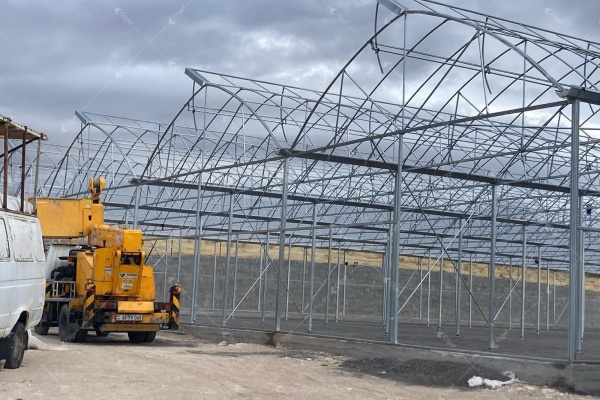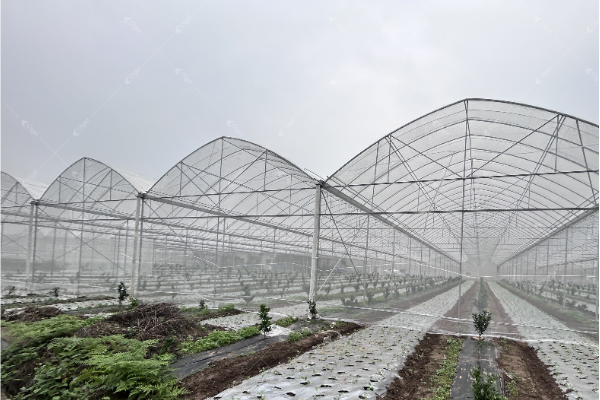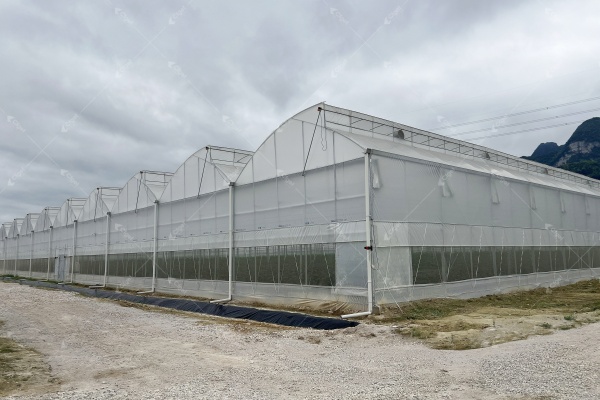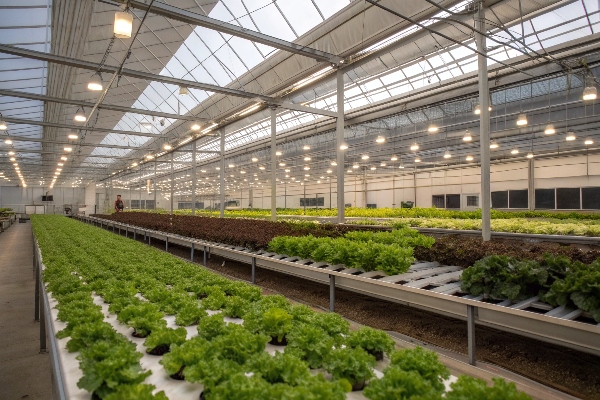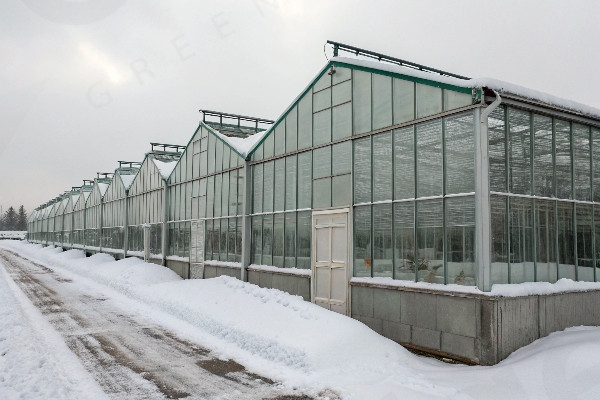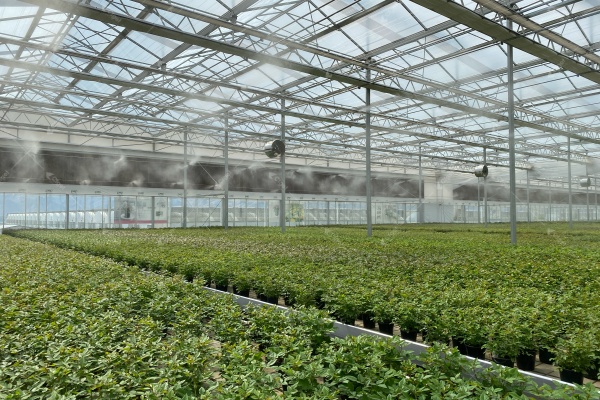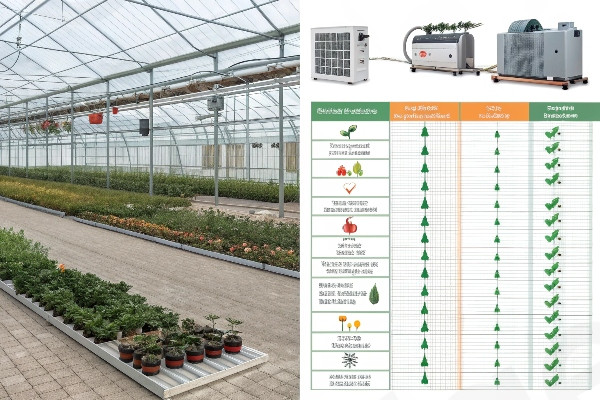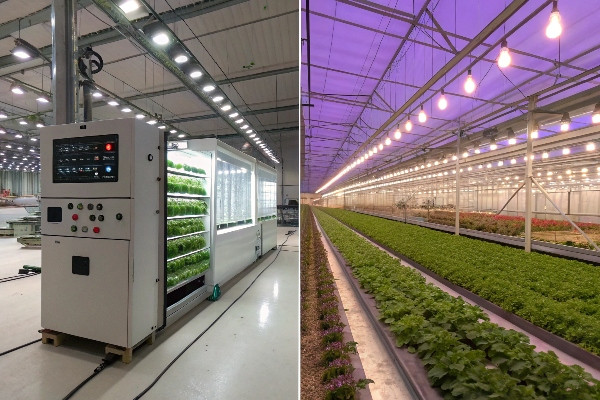Your crops face unpredictable weather, from scorching heat to freezing snow. This uncertainty threatens your yield and your profits. We help you build a greenhouse that guarantees success, no matter the local climate.
Choosing the right greenhouse means matching its design, materials, and climate control systems to your specific location. It involves analyzing local weather patterns, crop requirements, and long-term goals to create a durable, efficient, and profitable growing environment that is built to last.
I remember a client in the highlands of Vietnam. He was struggling with cool nights and extremely humid days. His previous, generic greenhouse was a disaster. The constant condensation was ruining his tomato crop with fungal diseases. His story showed me that a one-size-fits-all approach just does not work in modern agriculture. You need a solution that is tailored to your exact challenges. This is why we break down the problem into specific regional needs and engineering principles. We believe that a greenhouse should be a long-term investment, a tool that empowers you, not a problem you have to constantly solve. Let’s explore how we make this happen.
How Do We Adapt Greenhouses for Southeast Asia’s High Humidity?
Constant humidity breeds disease and slows plant growth. This can ruin your entire crop cycle and waste your investment. Our designs actively manage moisture to ensure you grow healthy, thriving plants.
We adapt greenhouses for high humidity by focusing on superior ventilation systems, like full-length roof vents and side roll-up walls. We also use special anti-drip plastic films and design the structure to promote constant airflow, which prevents condensation and reduces fungal diseases.
Managing high humidity is more than just opening a window. It is a science. In regions like Thailand, Malaysia, or the Philippines, passive ventilation is often not enough to combat the oppressive, moisture-laden air. We must integrate active systems to create a controlled environment where crops can flourish. I once worked on a project for an orchid grower in Thailand. The challenge was immense. We had to maintain a delicate balance of moisture for the orchids without letting destructive fungi take over. We solved this by creating a multi-layered approach that combined structural design with smart technology. The result was a 30% increase in top-grade flowers and a significant reduction in fungicide use.
Key Strategies for Humidity Control
Our approach combines several key technologies. First, we use high-volume, low-speed (HVLS) fans. These keep air moving constantly but gently. This prevents stagnant, humid pockets from forming around the plants, which is where problems start. Second, we install dehumidifiers that are linked to our central climate control system. They only activate when humidity levels cross a specific threshold, so they save a lot of energy.
Material and Structural Considerations
The choice of covering materials is also critical. We use polycarbonate panels or specialized anti-drip films. These materials have a surface treatment that guides condensation down the sides of the greenhouse. This water can then be collected, instead of dripping onto the plants below. This simple feature makes a huge difference in preventing diseases like botrytis and downy mildew.
| Feature | Benefit in Humid Climates | Target Crop Example |
|---|---|---|
| Full Roof Ventilation | Maximizes hot air and moisture escape | Tomatoes, Peppers |
| Anti-Drip Plastic Film | Prevents water from dripping on plants | Leafy Greens, Orchids |
| Automated Fogging System | Provides cooling without over-saturating | Ferns, Tropical Flowers |
| Insect Netting on Vents | Allows airflow while blocking pests | All high-value crops |
What Makes a Greenhouse Truly Sustainable for European Standards?
European markets demand sustainability, but greenwashing is common. Failing to meet these strict standards can lock you out of valuable markets. We build greenhouses that are genuinely eco-friendly and certifiable.
A truly sustainable greenhouse for European standards minimizes its environmental footprint. This is achieved through energy-efficient heating, water recycling systems, use of recyclable materials, and integration with renewable energy sources like solar panels, meeting certifications like HortiQ.
Sustainability is a core value for many of our European clients. It is not just a buzzword. It is a requirement for market access and brand reputation. For a research institution in the Netherlands, we did not just build a greenhouse. We created a closed-loop ecosystem. The goal was zero waste. This meant every drop of water was captured, filtered, and reused. All organic waste from the crops was composted on-site and returned to the soil. The energy to run the entire facility came from a combination of geothermal wells and rooftop solar panels. This project proved that modern farming can be both highly productive and environmentally positive. It became a model for sustainable agriculture in the region.
Energy and Water Efficiency
The first pillar of sustainability is resource management. We use double-layered glazing with special coatings and insulating properties to reduce heating costs in winter. Our irrigation systems are drip-based and computer-controlled. They deliver water and nutrients directly to the plant roots. This method cuts water consumption by up to 70% compared to older, less precise methods.
Meeting Certification Requirements
Achieving certifications like GLOBALG.A.P. or HortiQ is not an afterthought for us. It is part of the initial design phase. We document every material and process, from the steel in the frame to the source of the seeds. This ensures full traceability and compliance, giving our clients the confidence they need to sell to the most demanding markets.
| Sustainability Feature | Environmental Impact | Economic Benefit |
|---|---|---|
| Closed-Loop Water System | Reduces water usage by over 90% | Lower water bills, drought resilience |
| Geothermal Heating/Cooling | Drastically cuts fossil fuel consumption | Stable, low long-term energy costs |
| Diffused Glass Glazing | Scatters light for deeper canopy penetration | Increased yield, reduced energy for lighting |
| Recyclable Steel Frame | Minimizes landfill waste at end-of-life | High resale/scrap value, circular economy |
Can a Greenhouse Really Withstand Central Asia’s Extreme Weather?
Extreme winds and heavy snow can destroy a weak greenhouse overnight. This risk is too high for any serious grower. Our structures are engineered to stand strong in the harshest conditions imaginable.
Yes, a greenhouse can withstand extreme weather if it is properly engineered. This requires a reinforced hot-dip galvanized steel frame, a steep roof pitch to shed snow, and high-impact glazing materials like polycarbonate. The foundation must also be designed for strong winds and frost heave.
I will never forget a call from a client in Kazakhstan. A blizzard had just dumped over a meter of snow, and winds were gusting over 120 kilometers per hour. He was calling not to complain, but to thank us. While his neighbors’ structures had collapsed under the weight, his CFGET greenhouse was completely undamaged. His crops were safe. This is not luck. It is the result of meticulous engineering and using the right, high-quality materials. For Central Asia, we do not just sell a greenhouse. We provide a fortress for your crops, a secure production facility that you can rely on year after year, no matter what the weather brings.
Structural Reinforcement
The secret is in the frame. We use high-tensile, hot-dip galvanized steel. This process coats the steel in a layer of zinc, which protects it from corrosion and stress for decades. The truss design is calculated using sophisticated software that models the maximum potential snow and wind loads for the specific region. We then add a significant safety margin on top of that. We often use more steel and stronger connections than standard designs because we know that failure is not an option.
Glazing and Foundation
The choice of covering is also key. While glass is beautiful, twin-wall polycarbonate is often a better choice for these climates. It has incredible impact resistance against hail and wind-borne debris. It also provides excellent insulation. The foundation is just as important. We design deep concrete footings that anchor the structure firmly to the ground, preventing wind uplift and resisting movement from the ground freezing and thawing.
| Design Element | Purpose in Extreme Climates | Common Failure Point it Prevents |
|---|---|---|
| Gothic Arch Design | Sheds snow load effectively | Roof collapse under heavy snow |
| Hot-dip Galvanized Steel | Prevents rust and corrosion for 50+ years | Structural weakening and eventual collapse |
| Deep Concrete Footings | Anchors the structure against wind uplift | Greenhouse being lifted or shifted by wind |
| Twin-Wall Polycarbonate | Resists hail and provides insulation | Shattered glazing, crop loss, high heating costs |
Why is a Custom Greenhouse Design More Cost-Effective in the Long Run?
Buying a cheap, standard greenhouse kit seems like a good way to save money. But these savings often disappear when you face unexpected repairs and low yields. A custom design is an investment that pays for itself.
A custom greenhouse is more cost-effective because it is designed specifically for your crops, climate, and business goals. This precision leads to higher yields, lower energy and water consumption, and greater durability, delivering a much higher return on investment over the structure’s lifetime.
Thinking about the total cost of ownership is very important. A few years ago, a large berry producer in North America came to us. They had purchased several standard "hoop house" kits from another supplier to expand their operations quickly. The initial cost was low. But they soon ran into problems. The ventilation was poor, leading to disease. The structures were not strong enough for the regional snow load, and one even collapsed. They were spending a fortune on energy and labor just to keep the environment stable. We replaced their failed structures with a custom-designed multi-span greenhouse. The upfront cost was higher, but their energy bills dropped by 40%, and their yield of premium berries increased by 25% in the first year alone.
Optimizing for Your Crop
Every crop has a perfect environment. A custom design allows us to create that environment. For vine crops like tomatoes or cucumbers, we can design for extra height to allow for vertical growing, maximizing plants per square meter. For leafy greens, we can optimize the light diffusion to prevent burning and encourage even growth.
Planning for Future Growth
A custom design also means we can plan for your future. We can design the greenhouse in a modular way, so it is easy to expand later without disrupting your current operations. We can also pre-install the necessary infrastructure for future automation or technology upgrades.
| Aspect of Customization | Initial Cost Factor | Long-Term Benefit |
|---|---|---|
| Site-Specific Engineering | Higher design fee | Maximum durability, no weather-related failures |
| Crop-Specific Height/Width | Custom steel fabrication | Optimized growing space, higher yield potential |
| Integrated Climate Systems | Higher equipment cost | Lower energy/water bills, precise control |
| Modular Expansion Plan | More complex initial plan | Lower cost and faster expansion later |
What Role Does Advanced Climate Control Play in Modern Farming?
You can have the strongest greenhouse structure in the world, but without precise control of the environment inside, your results will be inconsistent. Random fluctuations in temperature or humidity can stress your plants. Advanced climate control is the brain of your operation.
Advanced climate control systems act as the central nervous system of a greenhouse. They use sensors and automation to precisely manage temperature, humidity, irrigation, and lighting. This creates the perfect growing environment 24/7, leading to faster growth, higher yields, and better quality crops.
I visited a research facility that was using one of our most advanced climate control systems. They were studying the effects of subtle environmental changes on the medicinal properties of specific herbs. Their system could create microclimates within the same greenhouse, adjusting CO2 levels, light spectrum, and humidity with incredible precision from a single computer. The data they collected was groundbreaking. It showed that this level of control is not just about growing more. It is about growing better, more valuable products. This technology, once only for researchers, is now accessible and essential for any high-value commercial grower who wants to compete.
The Power of Data and Automation
Modern climate control systems collect data from dozens of sensors inside and outside the greenhouse. They measure everything from solar radiation and wind speed to soil moisture and leaf temperature. An intelligent controller analyzes this data in real-time. It then automatically adjusts the vents, screens, heaters, fans, and irrigation systems to maintain the optimal conditions you have programmed. This automation not only saves labor but also reacts faster and more accurately than a human ever could.
Remote Management and Peace of Mind
These systems also give you complete control from anywhere in the world. You can monitor your greenhouse environment and make adjustments from your smartphone or laptop. You get alerts if any parameter goes outside the safe range. This means you can have peace of mind, knowing your valuable crop is protected even when you are not there.
| Control System Component | Function | Impact on Crop Production |
|---|---|---|
| Central Computer Controller | Analyzes data and automates equipment | Optimizes resource use, ensures consistency |
| Weather Station (External) | Measures outside conditions (sun, wind, rain) | Allows the system to anticipate changes |
| Internal Sensors (Temp/Humidity/CO2) | Provides real-time data on the internal climate | Prevents plant stress, promotes ideal growth |
| Automated Vents and Screens | Manages temperature and light levels | Reduces energy use, prevents overheating |
How Does Structural Material Choice Impact Greenhouse Longevity?
The frame is the skeleton of your greenhouse. If the skeleton is weak, the entire structure is at risk. The materials you choose for this frame will determine how long your investment lasts and how safe it is.
The choice of structural material directly impacts a greenhouse’s longevity, durability, and maintenance costs. Hot-dip galvanized steel is the superior choice because it offers the best combination of strength, corrosion resistance, and long-term value compared to aluminum or wood.
We are sometimes asked why we insist on using high-grade, hot-dip galvanized steel when other, cheaper options exist. My answer is always the same, and it comes from experience. Early in my career, I saw a grower lose half his greenhouse range in a storm. The structures were made from a lower-grade, pre-galvanized tubing. Over a few years, rust had started inside the tubes where he could not see it. The structure looked fine from the outside, but it was weak. The storm exposed that weakness in the worst way. Since then, we have exclusively used hot-dip galvanization. It protects the steel inside and out, ensuring a lifespan of decades, not just a few years.
Comparing the Options
There are three main materials used for greenhouse frames: wood, aluminum, and steel. Wood is prone to rot and pests. Aluminum is lightweight and rust-proof but lacks the strength of steel, so it requires more support columns that can cast shadows and get in the way. Steel offers the best strength-to-weight ratio, allowing for wide, open-span designs with fewer obstructions.
The Galvanization Difference
Not all steel is equal. The key is the protective coating. "Pre-galvanized" or "electro-galvanized" steel has a very thin coating that can be easily scratched or compromised, especially at weld points and cut ends. "Hot-dip galvanization" is a process where the entire fabricated steel component is submerged in molten zinc. This creates a thick, durable, and complete coating that protects every surface, inside and out.
| Material | Strength | Corrosion Resistance | Lifespan (Typical) |
|---|---|---|---|
| Wood | Low | Poor (requires constant treatment) | 5-15 years |
| Aluminum | Medium | Excellent | 20-30 years |
| Pre-Galvanized Steel | High | Good (vulnerable at welds/cuts) | 10-20 years |
| Hot-Dip Galvanized Steel | Very High | Excellent (self-healing) | 30-50+ years |
What is the Real Impact of Glazing Material on Crop Yields?
The covering of your greenhouse, known as the glazing, does more than just keep the weather out. It controls the quantity and quality of light that reaches your plants. This has a direct and significant impact on your final yield.
Glazing material directly impacts crop yield by controlling light transmission, light diffusion, and heat retention. Choosing the right material, like diffused glass or specific polycarbonate, can increase photosynthesis, reduce plant stress, and improve overall productivity by up to 20%.
A client growing high-value peppers in a sunny climate was having issues with the top layer of his crop getting scorched by direct sunlight, while the lower leaves were shaded and unproductive. The overall yield was good, but the quality was inconsistent. We replaced his standard clear polycarbonate roof with a diffused glass alternative. The new glass scattered the incoming sunlight, eliminating harsh shadows and bathing the entire plant canopy in uniform light. The next season, his yield of top-grade peppers increased by 15%, and the scorching problem was completely gone. This shows how a strategic change in glazing can be a powerful tool for optimization.
Light Transmission vs. Light Diffusion
High light transmission seems like the obvious goal. You want as much light as possible to reach your plants. But direct, harsh sunlight can be damaging. It creates hot spots and deep shadows. Light diffusion is the scattering of light. A good diffused glazing material will still have high total light transmission, but it delivers that light from many angles. This allows light to penetrate deeper into the plant canopy, activating more leaves for photosynthesis and leading to fuller, more productive plants.
Choosing the Right Glazing
The best glazing depends on your crop and your climate. In cloudy northern regions, you might prioritize the highest possible light transmission from clear glass. In sunny, hot regions, a highly diffused polycarbonate or glass that also has heat-blocking (IR) properties might be the best choice.
| Glazing Material | Light Transmission | Light Diffusion | Insulation (R-Value) |
|---|---|---|---|
| Single Pane Glass | Very High (~90%) | Very Low | Low (~0.9) |
| Diffused Glass | High (~88%) | Very High | Low (~0.9) |
| 6mm Twin-Wall Polycarbonate | High (~82%) | Medium | Medium (~1.6) |
| Double Layer Polyethylene Film | High (~85%) | High | Medium (~1.7) |
How Can Automation Reduce Labor Costs in Large-Scale Greenhouses?
Labor is one of the biggest and most unpredictable expenses in any large growing operation. Finding and managing a large workforce is a constant challenge. Automation offers a powerful solution to reduce this burden and increase efficiency.
Automation can drastically reduce labor costs by taking over repetitive and time-consuming tasks. Systems for irrigation, climate control, fertilization (fertigation), and even robotic harvesting can operate 24/7 with precision, freeing up human workers for more complex, high-value jobs.
We worked with a large leafy greens producer who was struggling with labor shortages and rising wages. Their biggest labor cost was irrigation and nutrient mixing. It was a daily, manual process for a large team. We designed and installed a fully automated boom irrigation and fertigation system. The system moves on overhead rails, delivering a precise water and nutrient mix to each specific section of the greenhouse, programmed from a central computer. This single system replaced the work of four full-time employees. The return on investment was less than two years, and the plants were healthier because they received a perfectly consistent application every single time.
Key Areas for Automation
Automation can be applied to many areas of a greenhouse. Climate control is the most common starting point. But the biggest labor savings often come from automating irrigation and fertigation. Moving beyond that, we can implement automated internal transport systems, like conveyor belts for moving harvested produce, or even robotic systems for scouting, spraying, and harvesting.
The Role of Human Workers
Automation does not eliminate the need for people. It changes their role. Instead of doing manual, repetitive labor, your team can focus on plant health monitoring, quality control, and managing the automated systems. This leads to a more skilled, more engaged, and more productive workforce. Your best growers can use their expertise to manage a much larger growing area effectively.
| Automated System | Manual Task Replaced | Key Benefit |
|---|---|---|
| Automated Drip/Boom Irrigation | Hand watering, moving sprinklers | Water savings, consistency, labor reduction |
| Automated Fertigation Injectors | Manually mixing nutrient tanks | Precision feeding, nutrient savings, better plant health |
| Motorized Curtains/Screens | Manually opening/closing vents/shades | Optimal climate, energy savings, plant protection |
| Robotic Harvesters (Emerging) | Hand-picking certain crops | 24/7 operation, addresses labor shortages |
Conclusion
Choosing the right greenhouse is a critical investment. By focusing on regional adaptation, quality materials, and long-term support, you can ensure your success and profitability in any climate.

